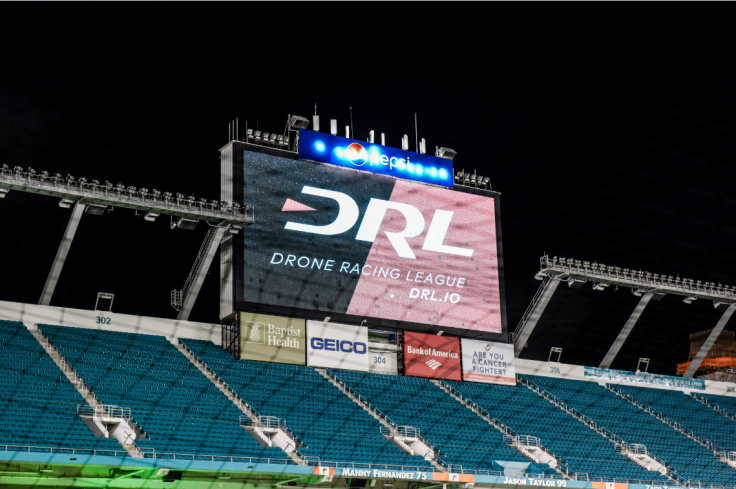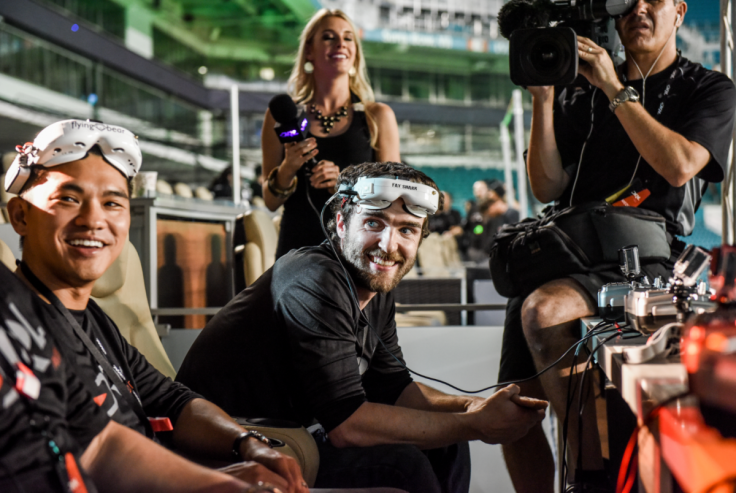Drone Racing League: Everything you need to know about the sport of the future

Drone wars, drone deliveries and now... drone races? In the logical next step to everything drone, people are taking the whizzing copters and pushing them as fast as possible, against each other, in abandoned buildings. Leading this call is the Drone Racing League (DRL), set to release the video from their first race of the six-event 2016 season on 22 February.
Some of the best drone racers in the world were recruited to take on the makeshift track at the Miami Sun Life Stadium – screaming through the changing rooms, hitting speeds of over 80mph – for the first of the six races, with the second set to take place in Los Angeles' abandoned Hawthorn Mall.
How does drone racing work?
A neon-edged course is laid out for competitors who have to pass through checkpoints while attempting to complete the course within the allotted time – all the while not crashing the drone into any number of obstacles (walls, for instance). Racers control their drones through a headset that beams real-time video from their speeding machine, essentially putting them in the VR cockpit for the ride.
Racers compete in a number of heats, gaining points for their races times and for passing through checkpoints, at the end of the heats the racers with the highest number of points is crowned the champion.
Where do they race?
So far, the races look to be set in grandiose buildings that are preferably abandoned and therefore easier to turn into a race track. One of the pre-season races took place in July 2015 in an abandoned power station on the banks of the Hudson River – they called it 'The Gates of Hell'.
The first proper race of the season took place in Miami, with the second set for L.A. and an abandoned mall described as "cinematic". Other races are planned for Detroit, Michigan, Auckland, New Zealand, and Mexico City, Mexico
What about the machines?
Each racer is given a number of custom quadcopters at the start of each race. Each is custom made by DRL for speech, agility and endurance. All racers get the same machines with the same custom circuit board and carbon fibre frame thus ensuring they're on an equal playing field and it's only driving skill that goes towards a win.
The drones are also fitted with 100 LED lights that are bright enough to keep the drones in sight hundreds of yards away.
How to get involved?

DRL picks the top racers from around the US and lets them compete. The racers are chosen based on their skill and reputation within the drone community. If you're totally new to all this, DRL has some tips on how to get started and get yourself involved in the futuristic world of First Person View (FPV) drone racing:
"If you're just getting started, we recommend starting with a 'micro' class FPV drone setup. They are relatively inexpensive, can be flown indoors, and are able to withstand crashes. The Hubsan FPV X4 is a great starting point. A small screen on the transmitter displays the view from the onboard camera, but can be upgraded to work with true FPV goggles. As you get more into the sport you will want to start building your own more powerful drone with higher-performance components.
You will find FPV meetups all over the country. MiniQuadClub.com, FPVlab.com and FPVRacing.tv are great places to start. Racing can consist of a formal competition like DRL, a few friends getting together in a field, or just freestyle flying – doing tricks and then sharing the videos online. Tracks can be roped off and laid out using trees, flags or poles, or even hula hoops or pool noodles."
You can find more information at their website, thedroneracingleague.com, and check out explainer videos and videos from the races on their YouTube channel.
© Copyright IBTimes 2025. All rights reserved.






















